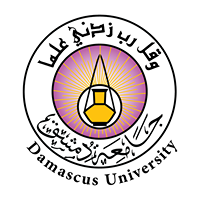Subscribe to the gold package and get unlimited access to Shamra Academy
Register a new userPolarisabilities from Compton Scattering on 3He
145
0
0.0
(
0
)
Authors
Harald W. Griesshammer
Ask ChatGPT about the research

No Arabic abstract
This executive summary of recent theory progress in Compton scattering off 3He focuses on determining neutron polarisabilities; see ref. [2] and references therein for details and a better bibliography. Prepared for the Proceedings of the 22nd International Conference on Few-Body Problems in Physics, Caen 9-13 July 2018.
rate research
Read More
During the workshop Compton Scattering off Protons and Light Nuclei: pinning down the nucleon polarisabilities (ECT*, Trento, Italy, 29 July -- 2 August 2013, http://www.ectstar.eu/node/98), recent developments had been reviewed in experimental and theoretical studies of real and virtual Compton scattering, static and generalized dipole scalar and spin polarisabilities of nucleons, as well as related phenomena in physics of muonic atoms. A vivid topic at the workshop was pathways towards the most precise extraction of the static polarisabilities from low-energy Compton cattering---including pertinent theoretical uncertainties. Being asked by our experimental colleagues, we prepared during the workshop a short letter with conclusions of the discussion, emphasising future prospects.
We investigate the dependence of polarisation observables in elastic deuteron Compton scattering below the pion production threshold on the spin-independent and spin-dependent iso-scalar dipole polarisabilities of the nucleon. The calculation uses Chiral Effective Field Theory with dynamical Delta(1232) degrees of freedom in the Small Scale Expansion at next-to-leading order. Resummation of the NN intermediate rescattering states and including the Delta induces sizeable effects. The analysis considers cross-sections and the analysing power of linearly polarised photons on an unpolarised target, and cross-section differences and asymmetries of linearly and circularly polarised beams on a vector-polarised deuteron. An intuitive argument helps one to identify kinematics in which one or several polarisabilities do not contribute. Some double-polarised observables are only sensitive to linear combinations of two of the spin-polarisabilities, simplifying a multipole-analysis of the data. Spin-polarisabilities can be extracted at photon energies gtrsim 100 MeV, after measurements at lower energies of lesssim 70 MeV provide high-accuracy determinations of the spin-independent ones. An interactive Mathematica 7.0 notebook of our findings is available from [email protected].
We present recent results on elastic deuteron Compton scattering calculations for polarised beans and targets up to next-to-leading order within Chiral Effective Field Theory in the Small Scale Expansion variant to implement a dynamical Delta(1232) degree of freedom. A simple power-counting argument discloses that np-intermediate rescattering states must be explicitly included at leading order already. This automatically results in the correct Thomson limit and guarantees current conservation. In view of ongoing effort at MAXlab, proposals at HIGS and plans at MAMI, we address in detail single- and double-polarised observables with linearly or circularly polarised photons on both unpolarised and vector-polarised deuterons. Our results indicate that several of the polarisation observables can be instrumental to extract not only spin-independent nucleon polarisabilities, but also the so-far practically un-determined spin-dependent polarisabilities which parameterise the stiffness of the nucleon spin in external electro-magnetic fields. Amongst the questions addressed are: convergence of the expansion for including the Delta, the role of the np-rescattering contributions, and sensitivity to the deuteron wave function. An interactive Mathematica 7.0 notebook of these findings is available from the authors.
We give an overview of low-energy Compton scattering (gamma^(*) p --> gamma p) with a real or virtual incoming photon. These processes allow the investigation of one of the fundamental properties of the nucleon, i.e. how its internal structure deforms under an applied static electromagnetic field. Our knowledge of nucleon polarisabilities and their generalization to non-zero four-momentum transfer will be reviewed, including the presently ongoing experiments and future perspectives.
We report observables for elastic Compton scattering from $^3$He in Chiral Effective Field Theory with an explicit $Delta(1232)$ degree of freedom ($chi$EFT) for energies between 50 and 120 MeV. The $gamma,{}^3$He amplitude is complete at N3LO, $mathcal{O}(e^2delta^3)$, and in general converges well order by order. It includes the dominant pion-loop and two-body currents, as well as the Delta excitation in the single-nucleon amplitude. Since the cross section is two to three times that for deuterium and the spin of polarised $^3$He is predominantly carried by its constituent neutron, elastic Compton scattering promises information on both the scalar and spin polarisabilities of the neutron. We study in detail the sensitivities of 4 observables to the neutron polarisabilities: the cross section, the beam asymmetry and two double asymmetries resulting from circularly polarised photons and a longitudinally or transversely polarised target. Including the Delta enhances those asymmetries from which neutron spin polarisabilities could be extracted. We also correct previous, erroneous results at N2LO, i.e.~without an explicit Delta, and compare to the same observables on proton, neutron and deuterium targets. An interactive Mathematica notebook of our results is available from [email protected].
Log in to be able to interact and post comments
comments
Fetching comments


Sign in to be able to follow your search criteria


